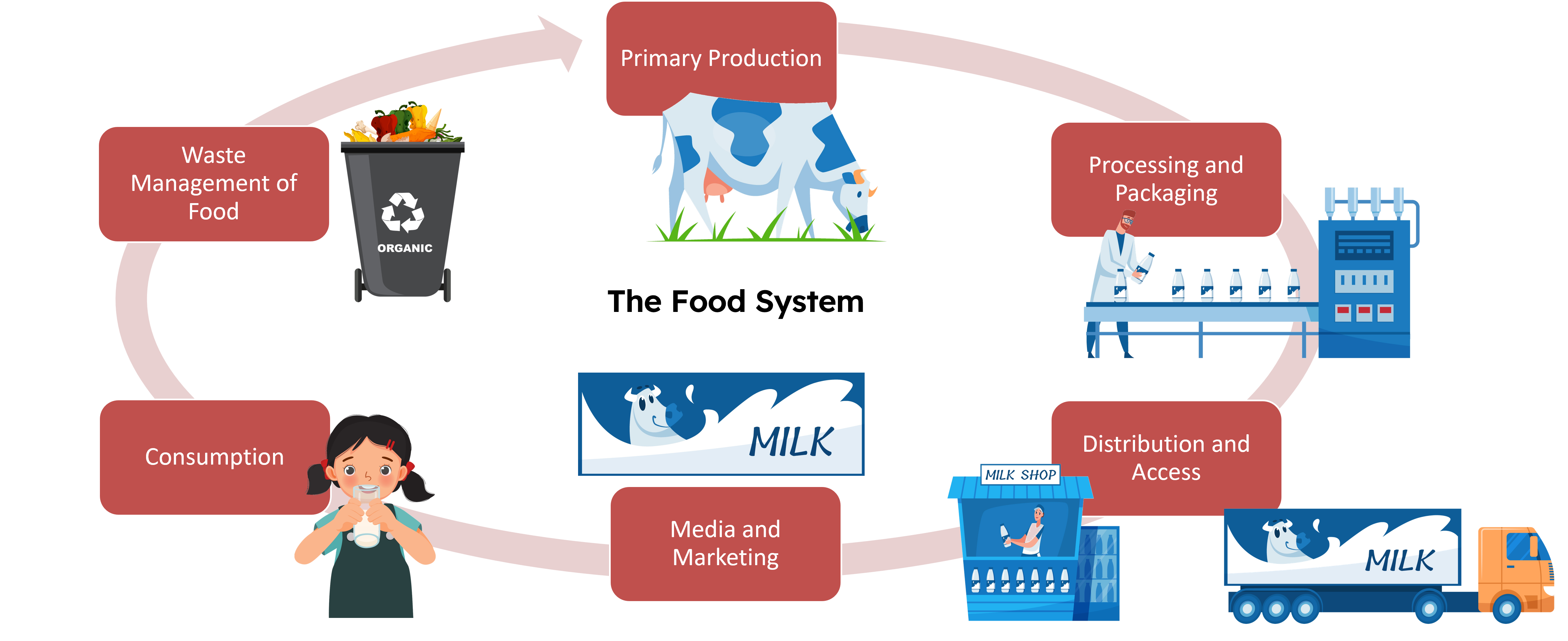Climate
Climate refers to the weather conditions in a particular area over a long period of time. It refers to the average temperature, humidity, atmospheric pressure, wind, and rainfall over about 30 years. The type of climate in a region impacts the kind of food that can be grown or raised in a given area. For example, some crops or animals are best grown or raised in warmer temperatures, while others are suited to colder climates. This results in certain foods being available at different times of the year due to the climate in different areas.
Climate affects local cuisine by determining the duration of a growing season and how many growing seasons there are each year. A region with a ‘temperate climate’ has a moderate amount of rainfall throughout the year, along with mild to warm summers and cool to cold winters. This kind of climate results in longer growing seasons. Crops that take longer to grow can be planted or several shorter cycles of a crop can be planted each year. Places like East Asia, Hawaii, and northern and southern New South Wales have temperate climates. Macadamia nuts are indigenous to Australia and grow well in the rich soils and high rainfall of northern New South Wales and southern Queensland. Hawaii has a similar climate and has become a significant producer of macadamias. In countries with hot summers and very cold winters, certain foods can only be grown at particular times of the year and may have a short growing season.
Weather
The terms ‘weather’ and ‘climate’ mean different things. Weather can change almost instantly, and it can only be used to describe the climate of a region when it is consistent over several decades. Weather is affected by outdoor temperatures and the amount of precipitation and plays a significant role in what you eat and how much you eat. Weather conditions such as floods and cyclones can have a disastrous impact on agriculture.
Temperature
When outdoor temperatures are warmer, a human’s metabolism slows down and the body does not have to work hard to keep warm. Therefore, the body requires less energy and people tend to eat lighter meals with fewer kilojoules. When outdoor temperatures are cooler, people may need to consume foods with more energy to keep warm and assist with body temperature regulation. Cuisine from warmer countries is also often prepared quickly and in smaller portion sizes than in colder countries. The food is usually light to eat because cooking in hot weather can be challenging and unpleasant.
People living in hot countries are also more likely to eat spicy foods than those living in cooler countries. Eating spicy foods raises a person’s body temperature and makes them perspire. This sweat cools the body down in hot weather. Traditionally, people were less likely to eat hot and spicy foods in places where it is cold and they are trying to keep warm.
Precipitation
Precipitation is the term used to describe any liquid or frozen water that is released back to the Earth as rain, sleet, hail, or snow. The amount of precipitation in a given area can significantly influence the food produced and, ultimately, the region’s food culture.
Rice crops thrive in areas with significant precipitation. Around 1000–3000 mm of rain falls in East Asia each year. Rice producers can grow two or three rice crops every year. Consequently, about 90% of global rice production comes from Asia. The amount of precipitation in Asia has resulted in rice being a common ingredient in the area’s cuisine and a major commodity to export.
Regions with little precipitation have a drier climate. These regions are more suitable for raising crops that need little water to grow. Maize (a type of corn), hot peppers, and squashes grow well in India and Mexico’s drier climates. Goats also survive well in dry conditions. They are a popular meat to eat in warmer climates such as Africa, South America, Central America, The Middle East, and India.
Location and Topography
The term topography describes the physical features on the surface in a country or region. Examples of topography include cities, dams, hills, lakes, mountains, oceans, rivers and even roads. The height or elevation of mountains and other objects is also considered a part of the topography. The term landscape is similar to topography, it merely refers to what someone can see in a particular area.
Different countries worldwide have diverse landscapes, which impacts the type of food they can grow. For example, countries such as China, Indonesia, Japan, and the Phillipines are bound by sea and consume a significant amount of seafood. In contrast, Himalayan cuisine contains barley, goats’ cheese, goat, mutton, noodles, and yak. It is very cold in the Himalayas and there are many mountains. Barley is a grain crop that tolerates cold conditions and high altitudes. Similarly, goats and yaks are animals that cope well in cold and mountainous situations. Mutton are older sheep, and their wool keeps them warm in cold conditions.
The topography of an area affects soil fertility. In some areas of Australia, fertile soils support the growth of vegetables and enable animals like sheep to be grazed. However, most of the country is dry and barren and unsuitable for crops or livestock. The topography of Australia determines the type of food consumed. Lamb can be grazed in the fertile regions, while cattle can be raised in the outback desert areas. As a result, both lamb and beef are a large part of our Australian cuisine.In hilly and mountainous countries such as Vietnam and the Philippines, rice is grown using terrace farming, where tiered platforms are built into the slopes. Consequently, rice is a huge contributor to these countries’ cuisines.
The resources available to the immediate area of ancient farmers influenced the crops and animals that they farmed. Some communities have passed on the traditions of planting crops and raising animals, along with knowledge of the land, to their descendants. This knowledge and experience tends to influence the food habits of people. Nowadays, food from all different countries is grown worldwide regardless of whether the food originated in that country or not – one of the main factors influencing this is the geography of the land.
The images below provide some examples of the environmental factors that influence the emergence of different food systems.













